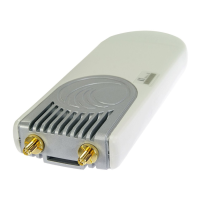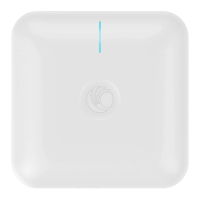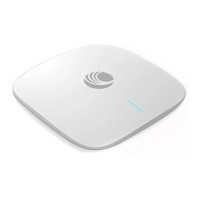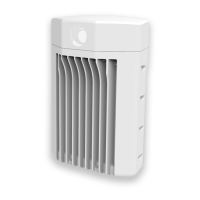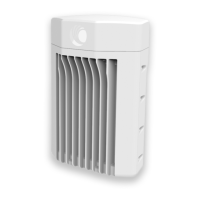CHAPTER 4: USING THE DEVICE
MANAGEMENT INTERFACE
PAGE 4-67
(Subscriber
Module Mode only
Wireless Status
(Access Point
Mode)
Up: The device wireless interface is functioning and sending beacons.
Down: The device wireless interface has encountered an error disallowing full
operation. Reset the device to reinitiate the wireless interface.
Wireless Status
(Subscriber
Module Mode)
Up: The device wireless interface is functioning and the device has completed
network entry.
Down: The device wireless interface has encountered an error disallowing full
operation. Evaluate radio and security configuration on the Access Point and
Subscriber Module device to determine the network entry failure.
Registered Access
Point MAC
Address
(Subscriber
Module Mode)
Wireless MAC address of the Access Point to which the Subscriber Module is
registered.
Range
(Subscriber
Module Mode)
The calculated distance from the Access Point, determined by radio signal
propagation delay.
The current frequency at which the device is operating.
Operating Channel
Bandwidth
The current channel size at which the device is transmitting and receiving.
N/A: DFS operation is not required for the region configured in parameter
Country Code.
Channel Availability Check: Prior to transmitting, the device must check the
configured Frequency Carrier for radar pulses for 60 seconds). If no radar pulses
are detected, the device transitions to state In-Service Monitoring.
In-Service Monitoring: Radio is transmitting and receiving normally while
monitoring for radar pulses which require a channel move.
Radar Signal Detected: The receiver has detected a valid radar pulse and is
carrying out detect-and-avoid mechanisms (moving to an alternate channel).
In-Service Monitoring at Alternative Channel: The radio has detected a radar
pulse and has moved operation to a frequency configured in DFS Alternative
Frequency Carrier 1 or DFS Alternative Frequency Carrier 2.
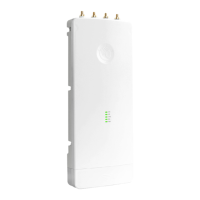
